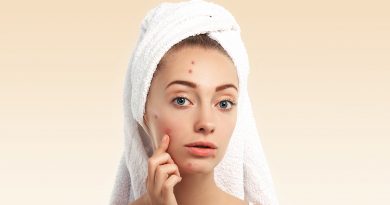All You Need To Know About Breast Cancer
Everybody gets sick at some point in their lives. Moreover, they can even develop serious illnesses. For example, cancer, heart disease, lung disease, or other ailments. Due to the differences in an individual’s body structure, some diseases are more common in one gender than the other. For example, breast cancer in women and testicular cancer in males.
Did you know it? The second largest cause of mortality for women after lung cancer is breast cancer. In fact, it is the most aggressive malignancy found in females. It may sound frightening. However, thanks to advancements in screening and therapy, the survival rates for this condition have significantly increased since 1989. Amazing, huh? Learn more as we discuss how raising awareness of breast cancer has helped women’s risk of developing the disease.
Breast cancer: What is it?
It develops when the breast’s cells start to grow out of control. In this situation, the cells typically develop into a tumor. This is frequently felt as a bump around the breast or comes out in an x-ray machine. The tumor is malignant, or cancerous. So, when it enlarges and infiltrates the surrounding tissues or metastasizes (spreads) to other parts of the body, breast cancer begins to form.
Furthermore, since breasts are a natural part of the female body structure, breast cancer affects exclusively women. However, it can also affect men.
What are the symptoms of breast cancer?
Breast cancer symptoms can appear at any stage of development, much like those of other illnesses. However, you may or may not be aware that it is hiding in your body based on its first symptom. Usually, it will be a thickened tissue area in the breast or a lump in the breast or armpit.
Here are some other breast cancer signs and symptoms you should know about:
- Pain in the armpit or breast that is constant throughout the month and does not change.
- Breast flesh that is flaming
- A rash on one’s body or a nipple.
- Discharge from a nipple (might contain blood).
- The skin on the breast or nipple flakes, peels, or scales.
What are this disease’s causes and risks?
Researchers have not yet identified the precise etiology of breast cancer. However, uncontrolled cell growth brought on by unchecked cell multiplication is the real cause of breast cancer.
According to studies, some risk factors for breast cancer can change. For example, drinking alcohol. Meanwhile, other symptoms like a person’s age, cannot change. However, there are many risk factors that could put your life or the life of a loved one in jeopardy. The following are risk factors for this illness:
✔️ Age
As we said before, age is an uncontrollable crucial element that increases the likelihood of developing breast cancer as a person ages.
✔️ Family background
You can face a double risk if you have any relatives who have battled this illness.
✔️ Personal background
When you find breast cancer in one breast, there is a chance that the disease will also be on the opposite side of the breast.
✔️ Menstruation
According to studies, there is a minor risk for women whose periods began before the age of 12 or whose menopause occurred after the age of 55.
✔️ Breast tissue
If a woman has thick breast tissue, her risk of developing breast cancer will increase.
What are the treatments?
There are various types of breast cancer. Thus, the type of breast cancer, stage of the disease, susceptibility to hormones, patient health, age, and preferences all affect the course of treatment. Here is a list of treatments to get you started:
✔️ Surgery
If the disease requires surgery, you can use one or more of the following procedures:
- Lumpectomy
- Mastectomy
- Sentinel node biopsy
- Dissection of axillary lymph nodes
- Reconstruction
✔️ Radiation Therapy
This will expose the tumor to precise amounts of radiation designed to kill cancer cells. Besides, a month or so after surgery, the patient with this disease can start receiving this treatment along with chemotherapy.
✔️ Chemotherapy
It is a cytotoxic medication recommended to kill cancer cells. Additionally, it can help treat cancer that has spread to other bodily regions, which lessens some symptoms.
✔️ Medication
Your doctor can recommend drugs to eradicate particular types of breast cancer. For example, anastrozole, lapatinib (Tykerb), bevacizumab (Avastin), and trastuzumab (Herceptin). Healthcare professionals give these drugs for a variety of reasons.
Takeaway
True, it is unsettling to learn about breast cancer. But if you know what to do and how to react to it, you won’t need to be afraid. With that said, increasing one’s knowledge of and awareness of breast cancer will undoubtedly increase the likelihood that a person with the condition will survive longer. Last but not least, the costs associated with breast cancer are serious. So, you should seek out measures that can ease the load. For example, having anastrozole coupons that you can use at nearby pharmacies.




